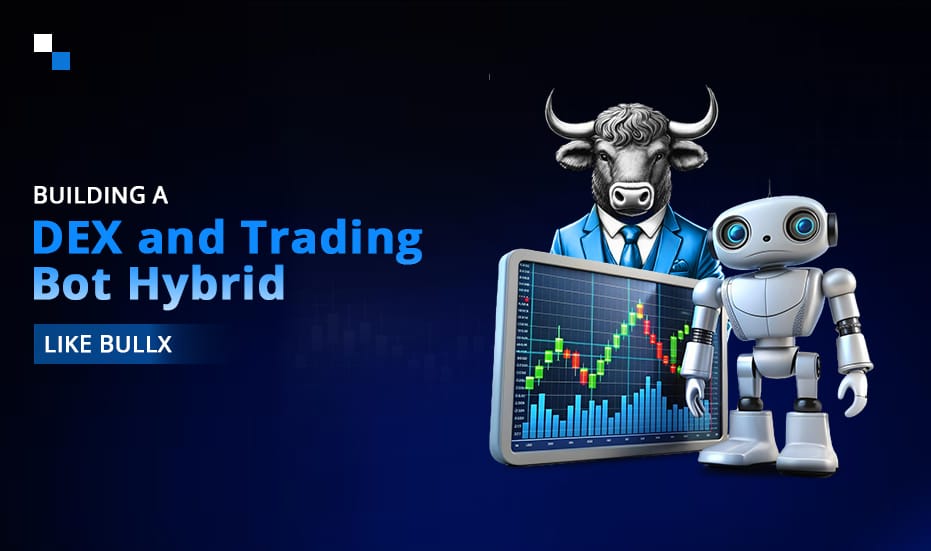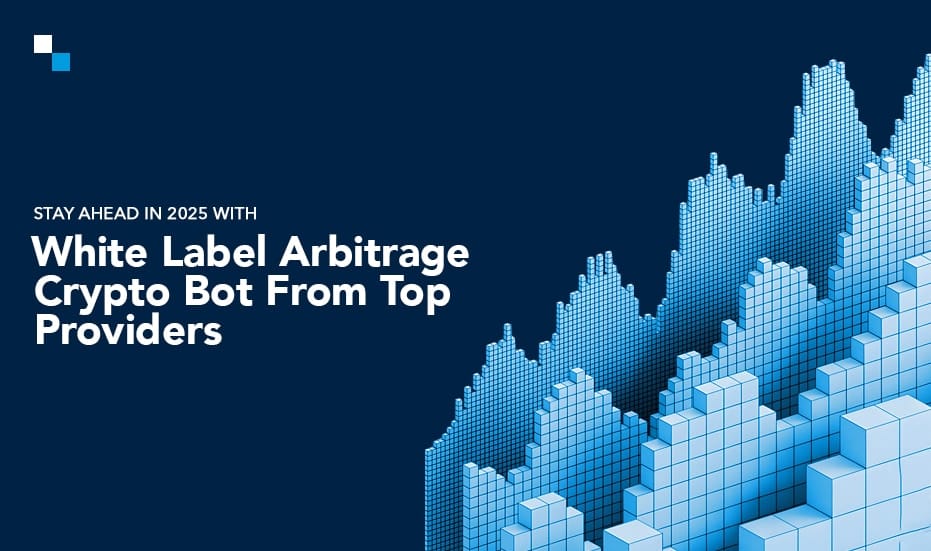
Polkadot’s JAM Chain: A Revolutionary Approach to Web3 Dominance
May 21, 2024
Showcasing History & Culture Through the Metaverse
May 22, 2024Automation has emerged as a crucial tool for businesses to empower their users to optimize their strategies and maximize profits. One of the most effective automated trading strategies is grid trading, carried out by advanced trading bots. Grid trading bots help traders systematically buy and sell assets at pre-determined intervals, capitalizing on market volatility.
This article delves into the various types of crypto grid trading bots, highlighting their functionalities and advantages. In addition, the article outlines 8 important considerations for grid trading bot development.
Understanding Grid Trading
Grid trading is a systematic trading approach that involves placing buy and sell orders at set intervals around a predetermined base price. This method aims to profit from market fluctuations without requiring constant monitoring by the trader. The grid structure creates a series of “grids” where the bot buys low and sells high, ultimately generating profits from each completed grid.
Types of Crypto Grid Trading Bots
Grid trading bots can be classified into the following types:
- Classic Grid Trading Bots
Classic grid trading bots are the most fundamental type of grid bots. They operate on the basic principle of buying low and selling high within a defined price range. The bot places buy orders below the current market price and sell orders above it, creating a grid of orders. The bot executes these orders when the market price fluctuates and generates profits from the price differentials.
Key Features:
- Simplicity: Easy to set up and use, which makes it suitable for new traders.
- Versatility: Can be used in both volatile and stable markets.
- Control: Traders can define the grid range, interval, and order size.
Advantages:
- Automated Trading: Reduces the need for constant market monitoring.
- Profit from Volatility: Takes advantage of small price movements.
- Martingale Grid Trading Bots
Martingale crypto grid trading bot development involves employing a strategy inspired by the Martingale betting system. This bot increases the size of subsequent orders after a loss, with the aim of recovering losses and securing a profit when the market reverses. This approach can be highly profitable in markets with frequent reversals.
Key Features:
- Order Multiplication: Increases order size after each loss.
- Recovery Mechanism: Designed to recover losses quickly during market reversals.
Advantages:
- High Profit Potential: Can generate significant profits in volatile markets.
- Loss Recovery: Efficient at recovering losses through increased order sizes.
- Reverse Martingale Grid Trading Bots
Reverse Martingale grid trading bots are the opposite of Martingale bots. Instead of increasing order size after a loss, these bots increase it after a win. This strategy aims to capitalize on winning streaks, ensuring that profits are maximized during favorable market conditions.
Key Features:
- Order Scaling: Increases order size after each win.
- Maximizing Streaks: Focuses on capitalizing on market trends.
Advantages:
- Profit Maximization: Ensures higher profits during winning streaks.
- Risk Management: Lower risk compared to Martingale bots, as it avoids compounding losses.
- Range-Bound Grid Trading Bots
Range-Bound grid trading bot development focuses on markets that trade within a specific price range. These bots place buy and sell orders within the defined range, profiting from the market’s tendency to revert to the mean price. They are particularly effective in markets that show sideways movement.
Key Features:
- Defined Range: Operates within a pre-determined price range.
- Mean Reversion: Capitalizes on the market’s tendency to revert to the mean.
Advantages:
- Stability: Suitable for stable markets with predictable price movements.
- Consistent Profits: Generates consistent profits by exploiting mean reversion.
- Trend-Following Grid Trading Bots
Trend-Following Grid Trading Bots are designed to operate in trending markets. Unlike classic grid bots that perform best in sideways markets, these bots place buy orders in an uptrend and sell orders in a downtrend, following the overall market direction.
Key Features:
- Trend Identification: Utilizes technical indicators to identify market trends.
- Directional Trading: Places orders in the direction of the trend.
Advantages:
- Trend Exploitation: Profits from sustained market trends.
- Flexible Strategy: Can adapt to changing market conditions.
- Arbitrage Grid Trading Bots
Arbitrage grid trading bots exploit price discrepancies between different markets or exchanges. These bots simultaneously buy and sell the same asset in different markets to gain risk-free profits from price differences.
Key Features:
- Price Discrepancy Detection: Identifies and exploits price differences between markets.
- Simultaneous Trading: Executes trades simultaneously to lock in profits.
Advantages:
- Low Risk: Capitalizes on risk-free arbitrage opportunities.
- Market Efficiency: Contributes to market efficiency by reducing price disparities.
- High-Frequency Grid Trading Bots
High-Frequency crypto grid trading bot development involves the execution of a large number of orders within a short time frame. These bots are designed to capitalize on minute price movements, generating profits through sheer volume of trades.
Key Features:
- Speed: Executes trades at high frequency, often within milliseconds.
- Volume: Generates profits through a high volume of trades.
Advantages:
- Precision: Takes advantage of minute price movements with precision.
- Scalability: Can generate significant profits through high trading volume.
- AI-Powered Grid Trading Bots
AI-Powered grid trading bots leverage artificial intelligence and machine learning to enhance their trading strategies. These bots analyze vast amounts of data to identify patterns, optimize grid parameters, and adapt to changing market conditions.
Key Features:
- Data Analysis: Utilizes AI to analyze historical and real-time market data.
- Adaptive Strategy: Continuously optimizes trading parameters based on market conditions.
Advantages:
- Enhanced Accuracy: Improves trading accuracy through advanced data analysis.
- Dynamic Adjustment: Adapts to market changes in real-time.
Explore Proven Grid Trading Bots Now!
Schedule Free DemoKey Considerations for Grid Trading Bot Development
Grid trading bot development is a complex endeavor that requires a thorough understanding of trading strategies, market dynamics, and software engineering. The following key considerations are crucial for developers aiming to create a robust and effective grid trading bot:
- Algorithm Design
The foundation of any successful grid trading bot lies in the design of its trading algorithm. Developers must meticulously plan how the bot will place buy and sell orders, manage risks, and respond to market conditions. Key aspects include:
- Grid Strategy: Define the logic for placing buy and sell orders within a grid. Decide on the price intervals, grid size, and whether to implement additional strategies like Martingale or reverse Martingale.
- Market Analysis: Incorporate technical indicators and other market analysis tools to inform the bot’s decisions. It is crucial to ensure that the algorithm can adapt to various market conditions, such as trending or range-bound markets.
- Risk Management
Effective risk management is critical to prevent substantial losses and ensure the long-term viability of the trading bot. Crypto grid bot development experts should implement robust risk management protocols, including:
- Stop-Loss Mechanisms: These limit potential losses on trades that move against the bot’s predictions.
- Position Sizing: Rules should be implemented for determining the size of each trade to manage exposure and minimize risk.
- Diversification: Ensure the bot can handle multiple trading pairs to spread risk across different assets.
- Performance Optimization
The performance of the grid trading bot directly impacts its profitability. Developers should focus on optimizing the bot’s performance through:
- Latency Reduction: Minimize the time it takes for the bot to execute trades by optimizing the code and using high-speed servers.
- Efficient Algorithms: Use efficient data structures and algorithms to process market data quickly and make real-time decisions.
- Scalability: Design the bot to handle increased trading volume and market data without performance degradation.
- Security Measures
As trading involves financial stakes, it is important to ensure the security of the grid trading bot. Security measures that can be implemented during crypto grid trading bot development include:
- Data Encryption: Encrypt sensitive data, including API keys and user credentials, to protect against unauthorized access.
- Secure Communication: Use secure communication protocols (such as HTTPS) to interact with exchanges and other services.
- Access Controls: Implement robust access control mechanisms to prevent unauthorized users from modifying the bot’s configuration or trading strategy.
- Exchange Integration
Integrating the grid trading bot with cryptocurrency exchanges is a fundamental aspect of grid trading bot development. The following things can be considered for the exchange integration:
- API Compatibility: Ensure the bot is compatible with the APIs of the target exchanges. This includes handling API rate limits and understanding the specific requirements of each exchange.
- Order Management: Implement reliable order management systems to track and execute buy and sell orders accurately.
- Real-Time Data: Ensure that the bot can access and process real-time market data from the exchanges to make timely trading decisions.
- Testing and Simulation
Thorough testing and simulation are essential to validate the performance and reliability of the grid trading bot before deployment. Key testing approaches include:
- Backtesting: This involves running the bot’s algorithm against historical market data to evaluate its performance and profitability in past market conditions.
- Forward Testing: It comprises testing the bot in a live environment with simulated funds to observe its behavior and performance in real-time market conditions.
- Stress Testing: This involves evaluating the bot’s performance under extreme market conditions to ensure it can handle volatility and high trading volumes.
- User Interface and Experience
A well-designed user interface (UI) can significantly enhance the usability and appeal of the grid trading bot. Crypto grid trading bot development experts should focus on creating an intuitive and functional UI that allows users to:
- Configure Settings: Easily set and adjust parameters such as grid size, price intervals, and risk management rules.
- Monitor Performance: Provide real-time dashboards and reports to track the bot’s performance and trading activity.
- Receive Alerts: Implement alert systems to notify users of significant events, such as executed trades, stop-loss activations, or system errors.
- Continuous Improvement and Maintenance
The cryptocurrency market is dynamic, and trading bots must evolve to remain effective. Developers should plan for continuous improvement and maintenance, including:
- Regular Updates: Release updates to improve performance, fix bugs, and adapt to changes in market conditions or exchange APIs.
- User Feedback: Collect and incorporate feedback from users to enhance the bot’s functionality and user experience.
- Performance Monitoring: Continuously monitor the bot’s performance and make adjustments as needed to optimize profitability and reduce risk.
Conclusion
The process of crypto grid trading bot development involves a multifaceted approach, combining algorithm design, risk management, performance optimization, and security. By addressing these key considerations, developers can create robust, efficient, and secure trading bots that cater to the needs of traders. As the cryptocurrency landscape continues to evolve, ongoing improvement and adaptation will be essential to maintain the bot’s effectiveness and ensure sustained profitability for its users.



